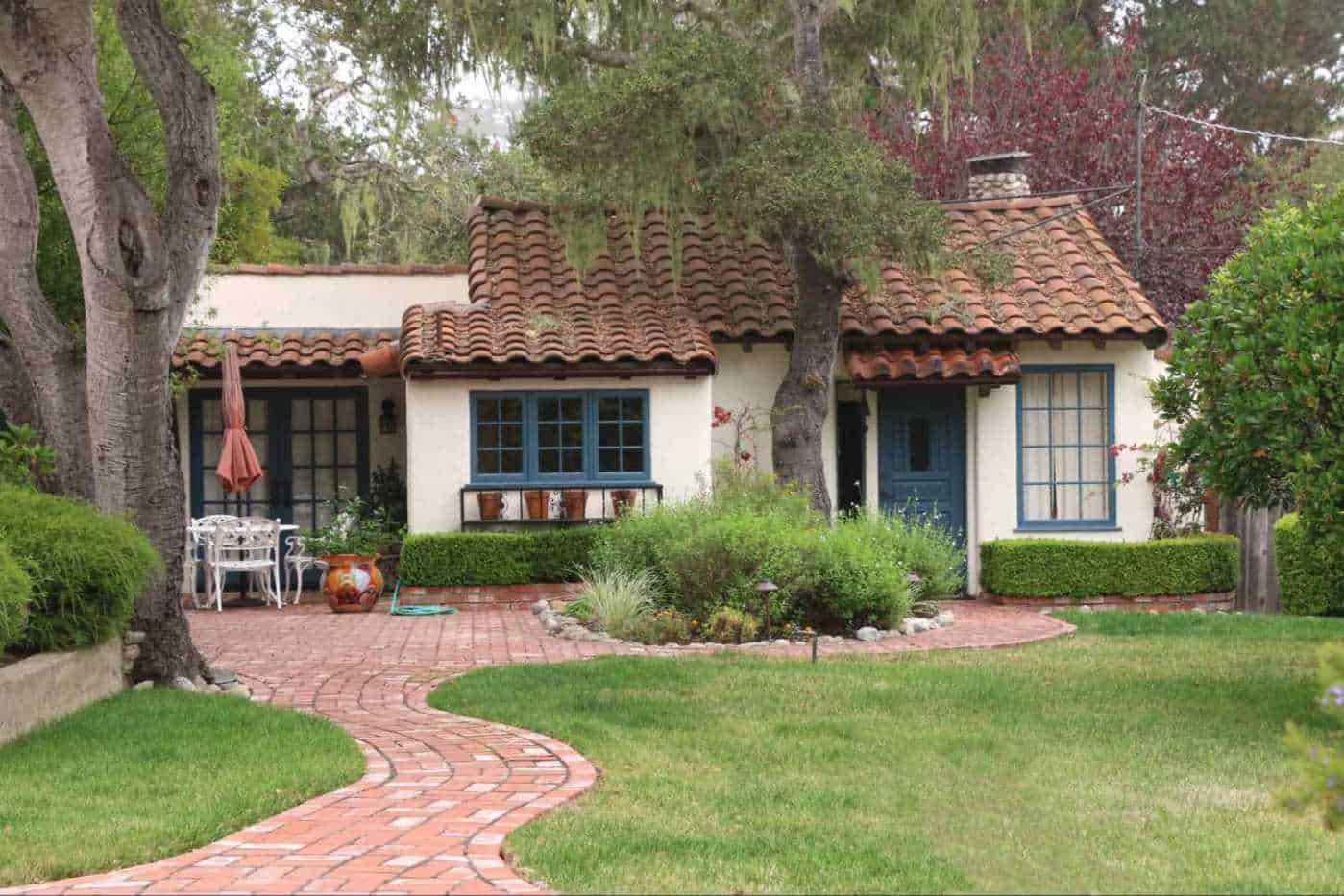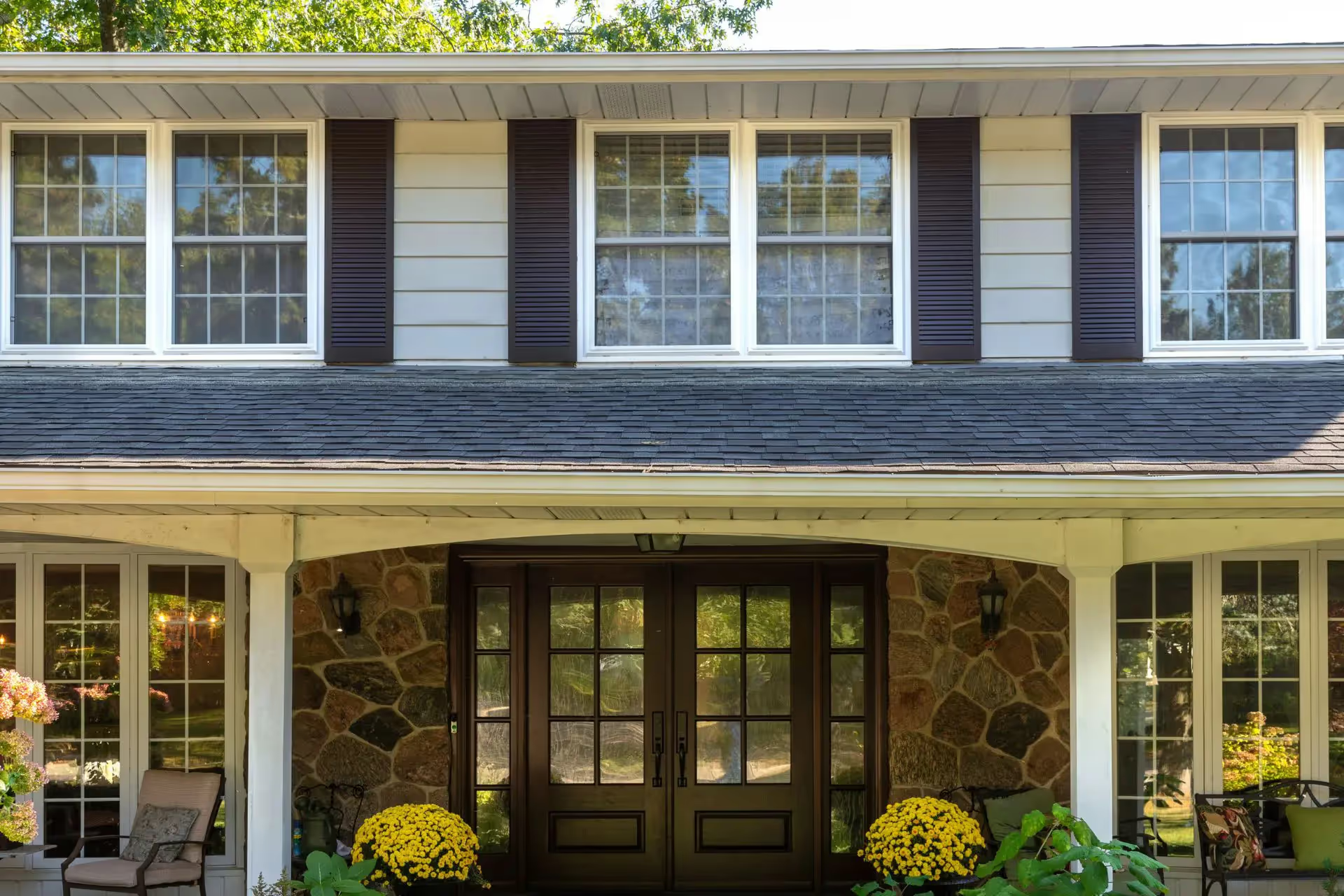"Everyone can identify with a fragrant garden, with beauty of sunset, with the quiet of nature, with a warm and cozy cottage."
- Thomas Kinkade
Thomas Kinkade, also known as the “Painter of Light,” produced notably calming works of art—most of which incorporated a cottage amidst greenery. Cottages simply have a universally comforting effect. In connection with this, the cottagecore aesthetic celebrates the comfort of an idyllic rural life. It is characterized by simplicity, calmness, elements of nature, and sustainability.
If you’re dreaming of your very own cottagecore house, you’re in the right place. This guide covers everything you need to know about achieving this aesthetic.
Let’s get started!

What is “Cottagecore”?
The broadest way to look at cottagecore is that it is fundamentally a lifestyle. As a lifestyle, cottagecore focuses on sustainability, traditional skills and crafts (aimed towards self-sufficiency), connecting with nature, and self-care.
It embraces the best of idyllic rural living. Though this is where it takes its inspiration (particularly in the traditional European countryside), one does not need to live in any specific kind of place to adopt bits and pieces of the cottagecore lifestyle.
When we think of cottagecore as, first and foremost, a lifestyle, the scope and elements of the cottagecore aesthetic become easier to grasp. Cottagecore aesthetic applies to both home design and fashion—both of which are simply outward expressions of the cottagecore lifestyle.
Cottagecore Aesthetic for Homes
To sum up what a cottagecore aesthetic means for home design, simply think of these central elements:
- Simplicity;
- Comfort;
- A connection with nature;
- Self-sufficiency;
- Sustainability; and
- Idyllic rural living/nostalgia.
All-in-all, a cottagecore house is a place of both reflection and contented preoccupation. It is a hub of self-care and a personal center for developing self-reliance. You’ll find plenty of cozy places to unwind in a cottagecore house—a soft vintage sofa here and there, a welcoming rocking chair, cozy rugs, etc. Along with these, you will also spot signs of a busy but happy lifestyle, such as ingredients intentionally on display, drying herbs, a basket of yarn, and so on.

Why Is Cottagecore Popular?
Though cottagecore takes its inspiration from the romance of 18th-century European rural living, the lifestyle and aesthetics of cottagecore only became popular in recent years. The interest to contrast with fast-paced modern living and to de-stress amidst the COVID-19 era have all played a part in its rising popularity.
The above circumstances got people looking for added home comfort and yearning for simpler times. Like fire to a powder of keg, cottagecore, as a lifestyle and aesthetic, took over social media platforms like Instagram and TikTok—and it won the hearts of many. Social media posts that were centred on cottagecore got millions and sometimes billions of views.
How to Design and Decorate A Cottagecore House
1. Start with the Right Colour Palette
Though there are numerous colours to choose from in the cottagecore colour palette (e.g. soft pastel, earth tones, and neutral colours), the quintessential cottagecore house typically has cream, off-white, or beige walls. It’s also common to see wallpaper here and there—but we’ll get to this element in a minute.
The outside of a cottagecore house plays on more diverse colour combinations. Some are earth-toned from the roof to the house itself. Another popular colour combination involves a dark roof (e.g. lavender, gray, tan, or dark brown) and an off-white or cream-coloured house.
Compared to the also increasingly popular farmhouse style, a cottagecore house tends to have a warmer-looking colour scheme overall.
https://www.pinterest.ph/pin/321937073362771981
2. Get More Wallpaper
When it comes to achieving a cottagecore aesthetic for your home, wallpaper is trendy. The best wallpaper for a cottagecore house is one with delicate floral or natural prints. It also works best to choose a wallpaper with a light neutral base (e.g. cream, white, light gray) with accents of more vivid but soft earth-toned or pastel colours (e.g. brown, baby blue, peach, lilac).
https://www.pinterest.ph/pin/70437486010544/
3. Choose the Right Fabrics
One of the quintessential cottagecore fabrics that you can use for blankets, throw pillows, and tablecloths is faded gingham. The keyword here is faded. The faded look gives the gingham fabric a more nostalgic touch, like a softened version of a fond childhood memory.
However, remember to use other fabrics along with gingham. This creates a more organic look. Fabric with small prints (especially floral and botanical prints) or solid soft-coloured fabrics will work well with faded gingham.
https://www.pinterest.ph/pin/185703184626723444/
4. Amplify the Coziness with Soft Furnishings
Comfort is one of the driving influences of the cottagecore aesthetic. Dial-up the coziness of your home with soft vintage sofas, victorian rugs, textured solid-coloured rugs, plush window seats, and perhaps even an inviting rocking chair.
https://www.pinterest.ph/pin/558868635017864502/
5. Choose Vintage-Inspired Furniture
Plush vintage-inspired sofas (preferably with wooden accents) blend well with the cottagecore aesthetic. Moreover, vintage tables and chairs that look old (but not as old or worn-out as shabby chic) will be great additions to your cottagecore house.
https://www.pinterest.ph/pin/5840674507672236/
6. Add Plants and Flowers
Potted plants, hanging plants, fresh flowers, dried flowers, pressed flowers, and hung-up herbs are perfect botanical touches to use for a cottagecore aesthetic. These elements add beauty to the space while also giving a hint that nature is just close by—as it should be in an idyllic rural life.
https://www.pinterest.ph/pin/615656211560115136/
7. Start a Herb Garden
Floral gardens look good on just about any type of home. But to truly have a cottagecore house garden, consider starting a patch for growing herbs. This ties back to self-reliance, which is one of the pillars of the cottagecore lifestyle.
https://www.pinterest.ph/pin/796644621563244199/
8. Create DIY Art
When it comes to DIY art for a cottagecore aesthetic, think about the various traditional skills associated with rural living. This includes the following, among others:
- Creating paintings of flowers or other serene themes;
- Crafting knit, crochet, or macrame items; and
- Designing your own pottery.
Not only is this great for self-care, but it’s also cottagecore-tastic.
https://www.pinterest.ph/pin/26317979064670853/
9. Showcase the Signs of Your Cottagecore Lifestyle
Unlike minimalism, cottagecore doesn’t shy away from moderate clutter that indicates positive preoccupation. This is why hanging herbs look great in cottagecore kitchens. Ingredients for cooking are also purposefully put on display. Knitting materials, bread-making tools, and so on are also kept in sight—but not in the way.
https://www.pinterest.ph/pin/577234877248818958/
10. Add Natural Light
Added natural light boosts just about any type of interior design, including the cottagecore aesthetic. Consider getting larger or additional windows to let in more light that will accentuate and uplift your home’s interiors. Moreover, added natural light is healthy for indoor potted or hanging plants.
https://www.pinterest.ph/pin/268245721547007870/
Get Added Natural Light with Stylish Cottagecore Windows by Clera
With Clera’s durable custom windows, you will get added natural light without the damaging effects of harsh UV rays. Abiding by cottagecore’s principle of sustainability, you will also get to have boosted energy efficiency for your cottagecore home with our ENERGY STAR-certified windows.
Clera’s windows have a sleek design and can be customized in various ways. Browse through our collection to find the perfect windows for your cottagecore house.
Feel free to reach out to our team for questions on the best windows for achieving a cottagecore aesthetic!








